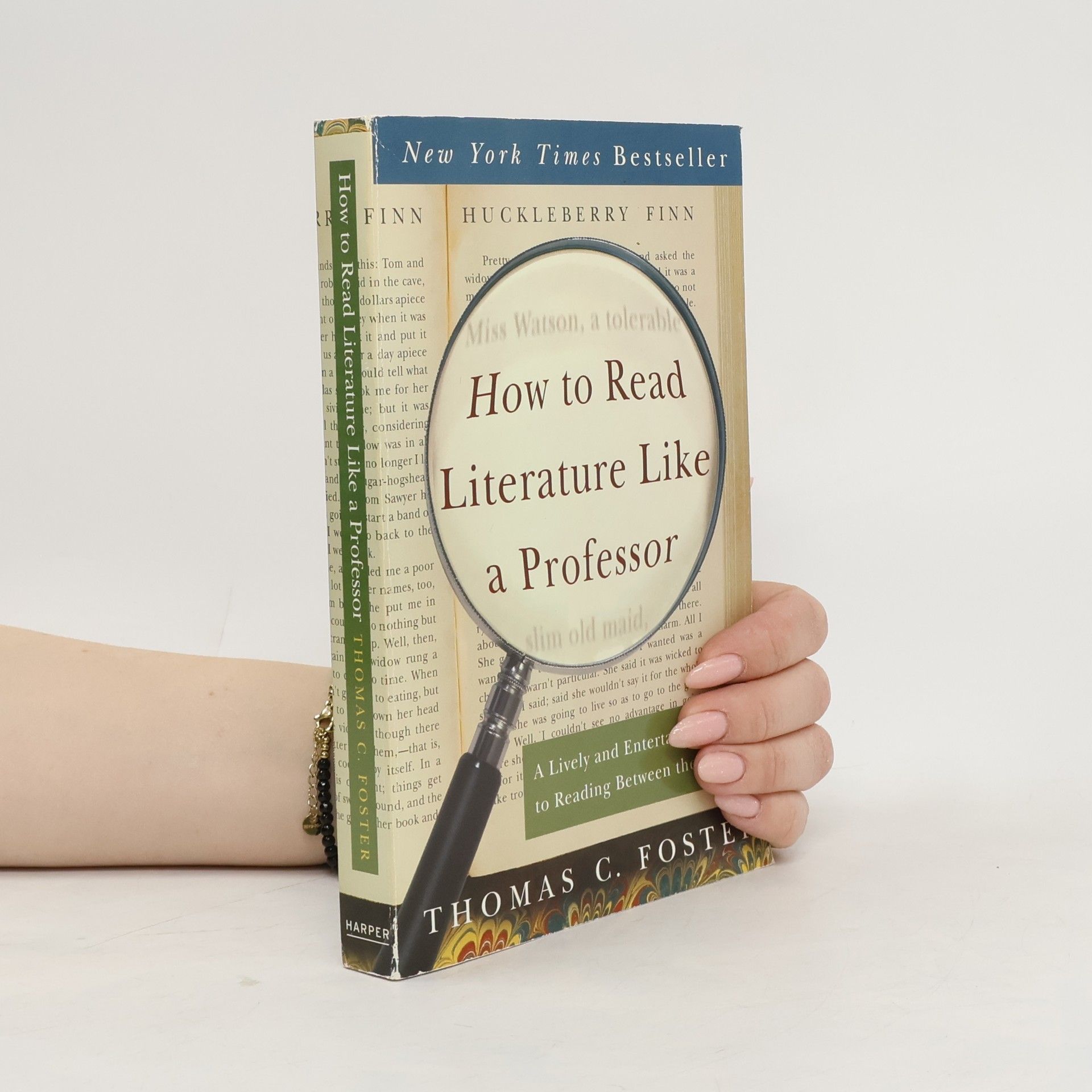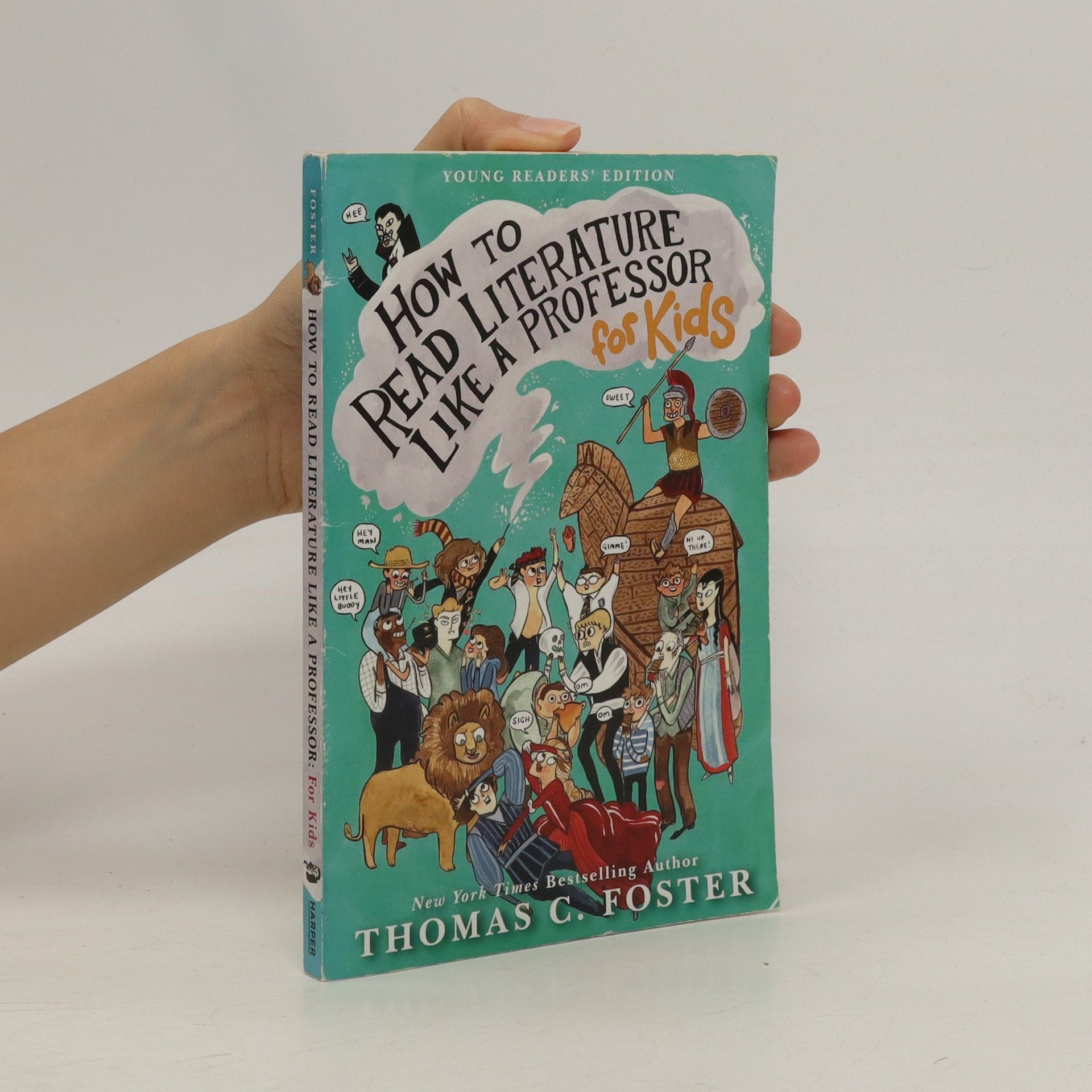The New York Times bestselling author of the beloved classic How to Read Literature Like a Professor teaches you how to write everything from a report for your community association to a meaningful memoir in this masterful and engaging guide. Combing anecdotes and hard-won lessons from decades of teaching and writing--and invoking everyone from Hemingway to your third-grade teacher--retired professor Thomas C. Foster guides you through the basics of writing. With How to Write Like a Writer you'll learn how to organize your thoughts, construct first drafts, and (not incidentally) keep you in your chair so that inspiration can come to visit. With warmth and wit, Foster shows you how to get into (and over) your best self, how to find your voice, and how to know when, if ever, a piece of work is done. Packed with enlightening anecdotes, highlighted with lists and bullet points, this invaluable guide reveals how writers work their magic, and reminds us that we all--for better or worse, whether we mean to or not--are known by what we put on paper or screen, both our thoughts and our words.
Thomas C. Foster Boeken
Thomas C. Foster is een gerenommeerd hoogleraar Engels, gespecialiseerd in moderne literatuur. Zijn diepgaande betrokkenheid bij literaire analyse en kritisch lezen heeft hem ertoe aangezet zijn inzichten te delen met zowel studenten als een breder publiek. Fosters werk duikt in de thema's en technieken die literatuur tot leven brengen, en biedt lezers de hulpmiddelen om de kunst van het verhalen vertellen dieper te waarderen. Door zijn geschriften en onderwijs beoogt hij de complexiteit van literaire werken te demystificeren, waardoor ze toegankelijker worden voor de gewone lezer.







How to Read Poetry Like a Professor
- 212bladzijden
- 8 uur lezen
From the bestselling author of How to Read Literature Like a Professor comes an essential guide to enjoying poetry, from Lord Byron to the Beatles. Poetry is both admired and feared; its rich history and emotional depth captivate many, yet its complexity can intimidate readers. Most of us first encountered poetry in beloved children's books, but as our reading shifted to prose, poetry became less familiar and more daunting. However, it doesn't have to be overwhelming. In an engaging voice, Thomas C. Foster helps readers conquer their fear of poetry and rediscover its joys. The book explores a diverse range of poets, including Shakespeare, Edna St. Vincent Millay, E.E. Cummings, and Seamus Heaney, teaching readers how to grasp a poem's primary meaning and appreciate its technical elements—meter, diction, rhyme, and structure. Foster encourages readers to view these elements as allies in understanding poetry. He also emphasizes the importance of listening for a poem's secondary meanings and recognizing the musicality in both poems and songs. With this guide, readers can unlock the rewards of poetry and enjoy its beauty once more.
The New York Times bestselling author of the beloved classic How to Read Literature Like a Professor teaches you how to write everything from a report for your community association to a meaningful memoir in this masterful and engaging guide. Combing anecdotes and hard-won lessons from decades of teaching and writing--and invoking everyone from Hemingway to your third-grade teacher--retired professor Thomas C. Foster guides you through the basics of writing. With How to Write Like a Writer you'll learn how to organize your thoughts, construct first drafts, and (not incidentally) keep you in your chair so that inspiration can come to visit. With warmth and wit, Foster shows you how to get into (and over) your best self, how to find your voice, and how to know when, if ever, a piece of work is done. Packed with enlightening anecdotes, highlighted with lists and bullet points, this invaluable guide reveals how writers work their magic, and reminds us that we all--for better or worse, whether we mean to or not--are known by what we put on paper or screen, both our thoughts and our words.
How to Read Literature Like a Professor: For Kids
- 176bladzijden
- 7 uur lezen
The go-to bestselling guide to help young people navigate from a middle school book report to English Comp 101 In How to Read Literature Like a Professor: For Kids, New York Times bestselling author and professor Thomas C. Foster gives tweens the tools they need to become thoughtful readers. With funny insights and a conversational style, he explains the way writers use symbol, metaphor, characterization, setting, plot, and other key techniques to make a story come to life. From that very first middle school book report to that first college course, kids need to be able to understand the layers of meaning in literature. Foster makes learning this important skill fun and exciting by using examples from How the Grinch Stole Christmas to The Adventures of Huckleberry Finn, from short stories and poems to movie scripts. This go-to guide unlocks all the hidden secrets to reading, making it entertaining and satisfying.
How to Read Literature Like a Professor Revised Edition
- 336bladzijden
- 12 uur lezen
A thoroughly revised and updated edition of Thomas C. Foster's classic guide—a lively and entertaining introduction to literature and literary basics, including symbols, themes, and contexts—that shows you how to make your everyday reading experience more rewarding and enjoyable. While many books can be enjoyed for their basic stories, there are often deeper literary meanings interwoven in these texts. How to Read Literature Like a Professor helps us to discover those hidden truths by looking at literature with the eyes—and the literary codes—of the ultimate professional reader: the college professor. What does it mean when a literary hero travels along a dusty road? When he hands a drink to his companion? When he's drenched in a sudden rain shower? Ranging from major themes to literary models, narrative devices, and form, Thomas C. Foster provides us with a broad overview of literature—a world where a road leads to a quest, a shared meal may signify a communion, and rain, whether cleansing or destructive, is never just a shower—and shows us how to make our reading experience more enriching, satisfying, and fun. This revised edition includes new chapters, a new preface, and a new epilogue, and incorporates updated teaching points that Foster has developed over the past decade.
How to Read Literature Like a Professor
- 314bladzijden
- 11 uur lezen
While many books can be enjoyed for their basic stories, there are often deeper meanings interwoven in these literary texts...How to Read Literature Like a Professor helps us to discover those hidden truths by looking at literature with the eyes—and the literary codes—of the ultimate professional reader: the college professor.What does it mean when a fictional hero takes a journey? Shares a meal? Gets drenched in a sudden rain shower? Often, there is much more going on in a novel or poem than is readily visible on the surface – a symbol, maybe, that remains elusive, or an unexpected twist on a character – and there's that sneaking suspicion that the deeper meaning of a literary text keeps escaping you.In this practical and amusing guide to literature, Thomas C. Foster shows how easy and gratifying it is to unlock those hidden truths, and to discover a world where a road leads to a quest; a shared meal may signify a communion; and rain, whether cleansing or destructive, is never just rain. Ranging from major themes to literary models, narrative devices and form, How to Read Like a Professor is the perfect companion for making your reading experience more enriching, satisfying and fun.
How to Read Nonfiction Like a Professor
- 336bladzijden
- 12 uur lezen
The New York Times bestselling author of How to Read Literature Like a Professor uses the same skills to teach how to access accurate information in a rapidly changing 24/7 news cycle and become better readers, thinkers, and consumers of media. We live in an information age, but it is increasingly difficult to know which information to trust. Fake news is rampant in mass media, stoked by foreign powers wishing to disrupt a democratic society. We need to be more perceptive, more critical, and more judicious readers. The future of our republic may depend on it. How to Read Nonfiction Like a Professor is more careful, more attentive, more aware reading. On bookstore shelves, one book looks as authoritative as the next. Online, posts and memes don't announce their relative veracity. It is up to readers to establish how accurate, how thorough, how fair material may be. After laying out general principles of reading nonfiction, How to Read Nonfiction Like a Professor offers advice for specific reading strategies in various genres from histories and biographies to science and technology to social media. Throughout, the emphasis will be on understanding writers' biases, interrogating claims, analyzing arguments, remaining wary of broad assertions and easy answers, and thinking critically about the written and spoken materials readers encounter. We can become better citizens through better reading, and the time for that is now.
The feminist pornography debates are centered around the opposition between pro-censorship factions and the pro-sex radicals or sex positives. But what exactly is the relationship between these debates and postmodern theories of reading and performativity? What happens to these debates when they are placed in the context of colonial or U.S. racial histories? What is the history behind today's sexual radicalism? How radical is it? In the first section of Sex Positives?, Nicola Pitchford, Naomi Morgenstern, Victoria L. Smith, and Gabrielle N. Dean focus on the recent sex wars in U.S. feminism, especially within lesbian culture. Elissa J. Rashkin, Gaurav Desai, and James Smalls broaden the terms of the sex wars debates in the second section to include sexualized racial and colonial representations, from Chicana, African, and African-American perspectives. Finally, Sander L. Gilman, Laura Ciolkowski, and Laura Frost explore a variety of historical contexts for understanding contemporary forms of sexual representation and the repression of such representations.
EDM arrangieren
Basics der elektronischen Musik
Jak číst film: Cinefilův průvodce po světě pohyblivých obrázků
- 360bladzijden
- 13 uur lezen
Nepostradatelná analýza nejslavnějšího média — filmu. Když se v kině ztlumí světla a na plátně se ozve lví řev, těšíme se na to, jak budeme šokovaní, vystrašení, nadšení, dojatí a uchvácení. Zatímco jsme zároveň veselí a vyděšení, naše mysl zpracovává různá data — vizuální, jazyková, sluchová a prostorová — a dává tak dohromady význam. Foster ukazuje filmovým fanouškům, studentům, budoucím scenáristům a režisérům, jak se proměnit z pouhého diváka v kultivovaného čtenáře tohoto významného média. Investigativním přístupem, který si čtenáři zamilovali už v knize Jak číst literaturu jako profesor, zkoumá filmovou gramatiku na příkladu různých klasických i současných filmů natočených ve Spojených státech, ale i jinde ve světě. Díky Fosterově knize získá čtenář kvalifikaci a také sebedůvěru k tomu, aby si mohl ze svých oblíbených filmů odnést co nejvíce.

